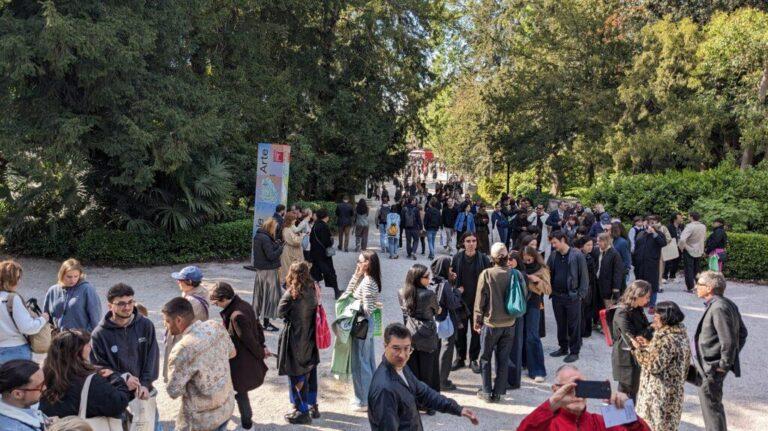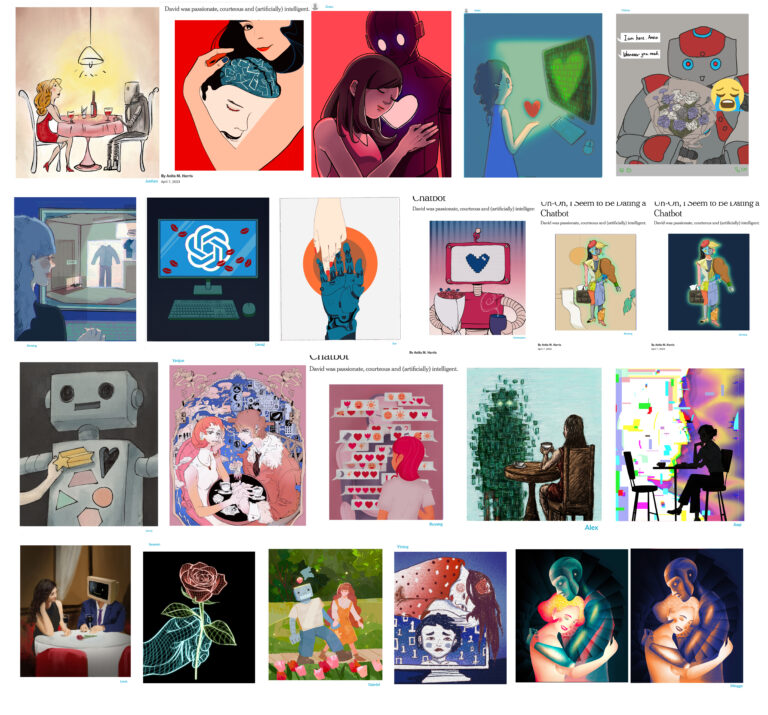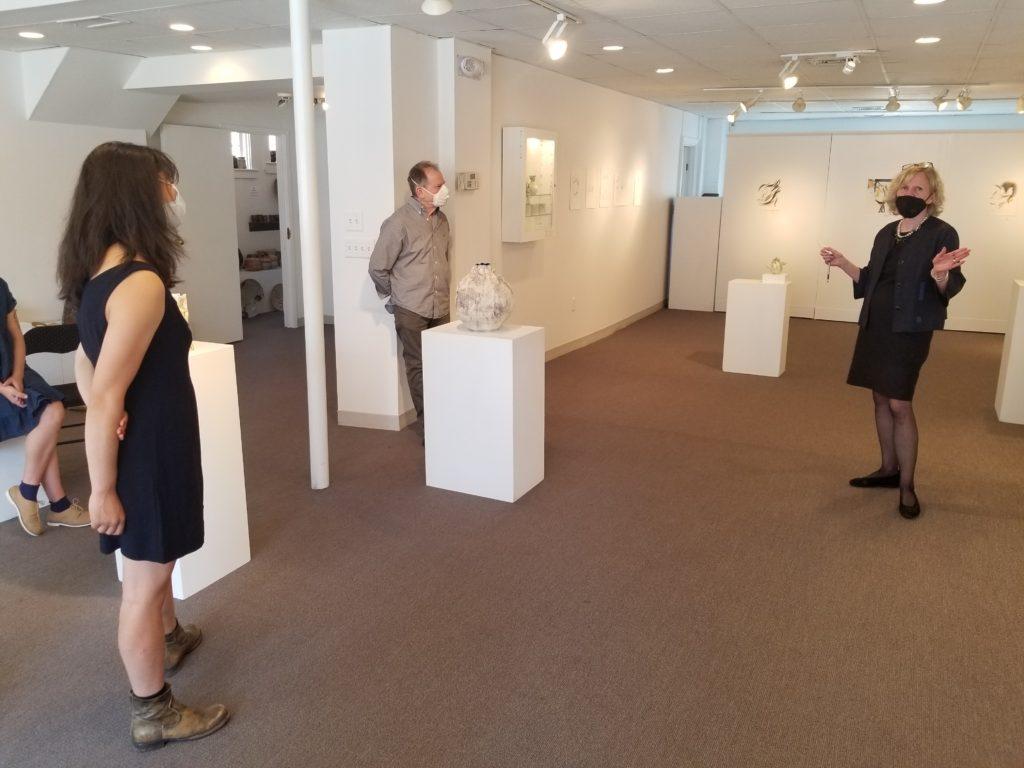

This past weekend, I was ecstatic to attend my first gallery opening since March, when shelter in place restrictions began. I was equally ecstatic that this was at Lacoste, in Concord; that it featured the work of a 20-something Newton native, female artist; and that. in keeping with the Lacoste tradition of sponsoring diverse and female artists the gallery will be donating 18 per cent of sales to the Black Lives Matter cause. And also: that I learned a lot.
The exhibit.
The exhibit, “In Response to George Ohr,” features the work of Newton, MA ceramicist Lily Fein, who. in January 2020, traveled to Louisiana and Mississippi to to study the work of George Ohr -an American ceramic artist and the self-proclaimed “Mad Potter of Biloxi.” [1]

Ohr, born in 1857, died largely unknown in 1918. For decades, his pots sat in a garage behind his sons’ gas station in Biloxi. But “his work is currently viewed as ground-breaking and a harbinger of the abstract sculpture and pottery that developed in the mid-20th century. His pieces are now relatively rare and highly coveted,,” according to Wikipedia.
Fein writes that she “was attracted to how Ohr inverted the metaphor of the vessel–what one would expect to live in the inside of the hollow object manifests itself on the exterior of the pot. In turn, as much as a pot references the human body, Ohr put the insides of human bodies on the outside of his pots. He made the underlying connection between the vessel and the body overt: putting excremement in teacups and making vulva piggy banks. [This is Anita: Ew…sounds gross]. He was not shy, which posthumously gave other clay artists permission to play.”
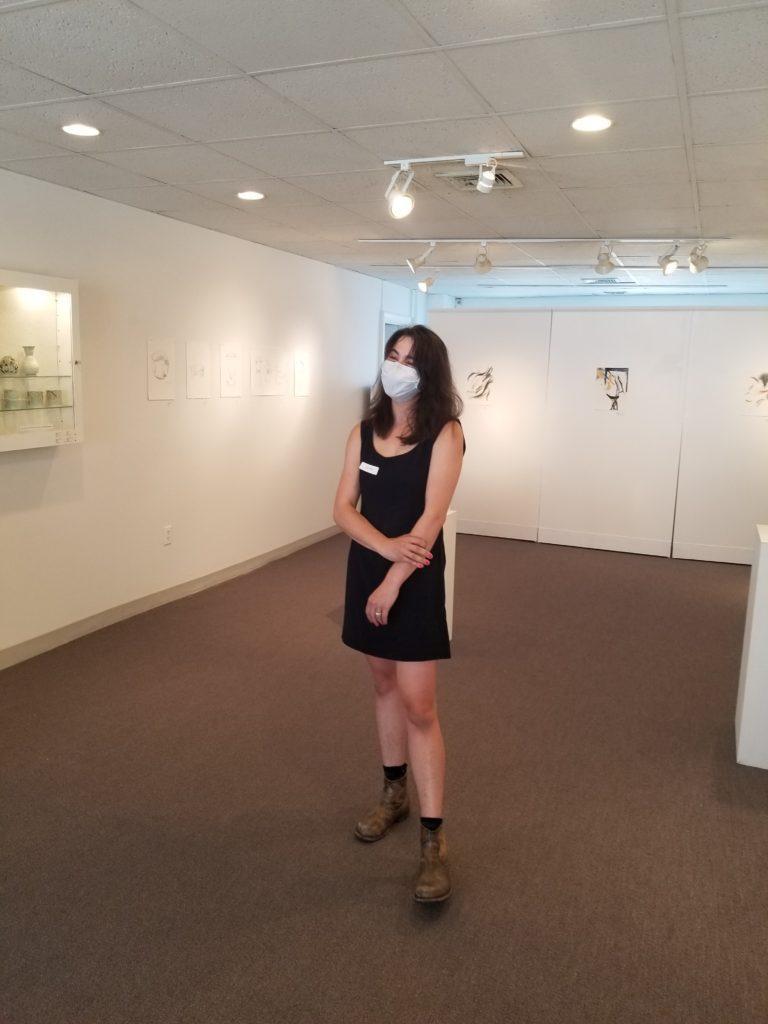
Fein went South thinking that seeing Ohr’s work in the stacks at the New Orleans Museum of Art and at the Ohr-O’Keefe Museum in Biloxi would bring “revelations and new approaches” to her own work. As she moved through the stacks and and “made work” in the South, she realized that that she needed to claim her relationship to Ohr apart from him and the objects and persona he created–asserting her own narrative through repeated motifs and gestures–“in conversation with Ohr’s signature twists and folds, but continuing to change.”

Whereas Ohr used a pottery wheel in creating his vessels, Fein’s work begins with coiling the clay, and pinching it. She then alters the pieces and changes their form. Often pushing out from the inside of the vessel, creating rib-like features, she squeezes parts of the exterior to create folds, and sometimes uses a needle to methodically poke holes in the surface and create a new texture. “I am continually reminded of how Ohr claimed his clay gestures in his lifetime while I continue to develop my own, in mine, ” she writes.
Unaware of any of this upon entering the gallery, my friend Chrissie and I did not know quite what to make of Fein’s work–but found it beautiful, intriguing, and sometimes humorous. For example–I probably shouldn’t admit this– one vessel looked to me like someone’s legs sticking upside down out of a wine jug. Chrissy discovered an image of a corresponding Ohr vase on the site of the Museum of Metropolitan Art, below.
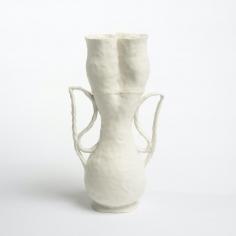

Lucy Lacoste, the gallery founder and owner, explains that “Ohr’s pots have a flamboyant sensuality often bordering on the erotic. They can have a visceral, direct sexuality, as can be seen in his famous money bank—the front is a vulva and the back, a breast.”
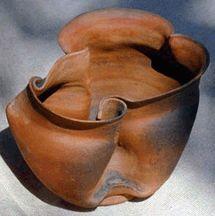
I couldn’t readily find an image of the money bank online–so will leave that to your imagination. But here’s one of Ohr’s pieces that one might perhaps, consider sensual/sexual:
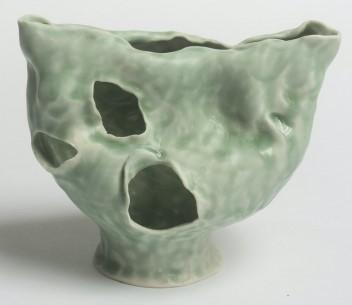
Lacoste explains that “Lily Fein’s sensuality is intuitive, organic, implied—naturally reflecting the outer female sex organs. This is evident in her Vulva series. The edge is important. The clay reflects the way she touched and pinched the clay—as if it were skin. ” Link to video
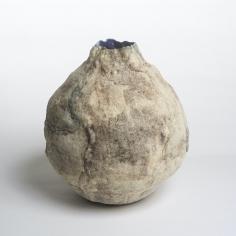
In Fein’s show, I found one work especially interesting. It was roughly shaped, with shiny royal blue glaze on the inside–and a flat-finished outer surface that Fein said she had stuck many times with a needle–and was meant to look “bruised.”
Commitment to Diversity
Regarding the gallery’s commitment to diversity, Lacoste writes on her website:”Like many other businesses in the arts, we are searching for ways to fight the injustices that remain prevalent in this country.

“Now more than ever, it’s important to go beyond saying we stand with oppressed communities. We must take measurable actions. We do agree that if we are not part of the solution, we are part of the problem.
“Out of regard for the important protests occurring across the country, we postponed the Fein opening June 21. To amplify voices less heard, Lily Fein and the Gallery are committing 18% of sales from this exhibition to the Boston chapter of the Black Lives Matters organization.
“Our statement is brief out of respect for those with lived experiences who are leading the way to human rights for all.”
Earlier, Lacoste presented $2,500 to Emerson Hospital for its COVID-19 Relief fund. The money was raised by the sale of work by Montana ceramic artists Beth Lo and Adrian Arleo and by Lucy Lacoste Gallery.
Numerous recent Lacoste exhibits have been devoted to the work of women from a multitude of backgrounds.
The current Lacoste show will be on view through June 27, 2020 at 25 Main St., Concord, MA. Link to Website
–Anita M. Harris
Anita M. Harris is a writer, photographer and communications consultant based in Cambridge, MA.
New Cambridge Observer is a publication of the Harris Communications Group, also in Cambridge.


